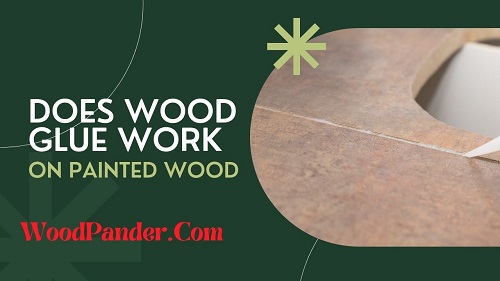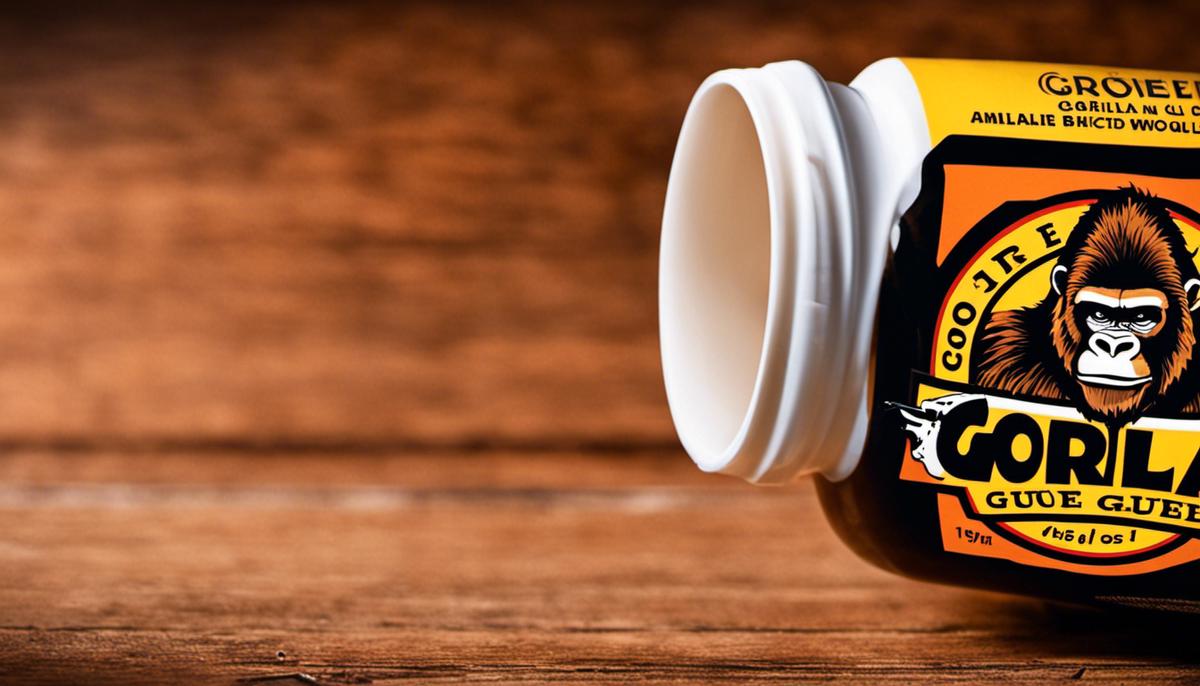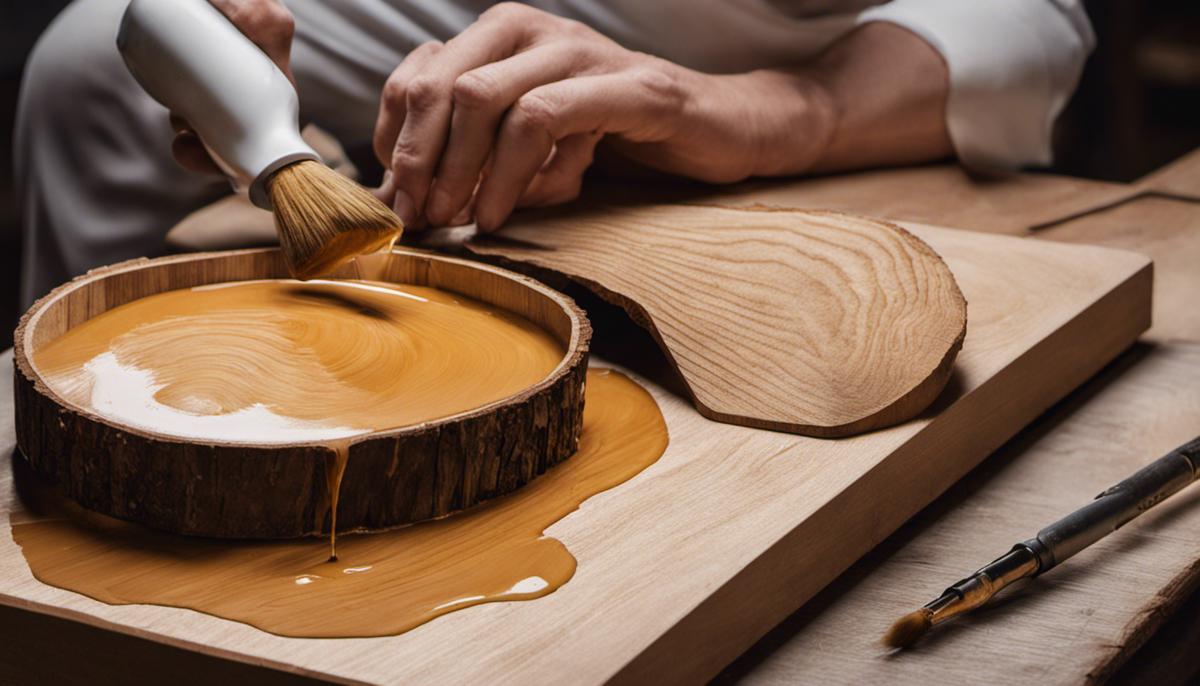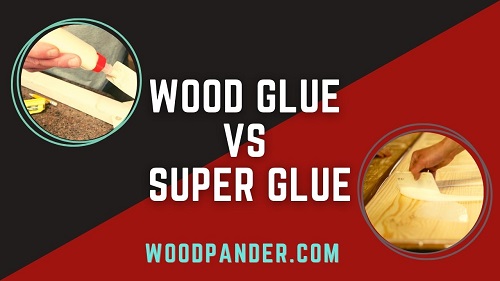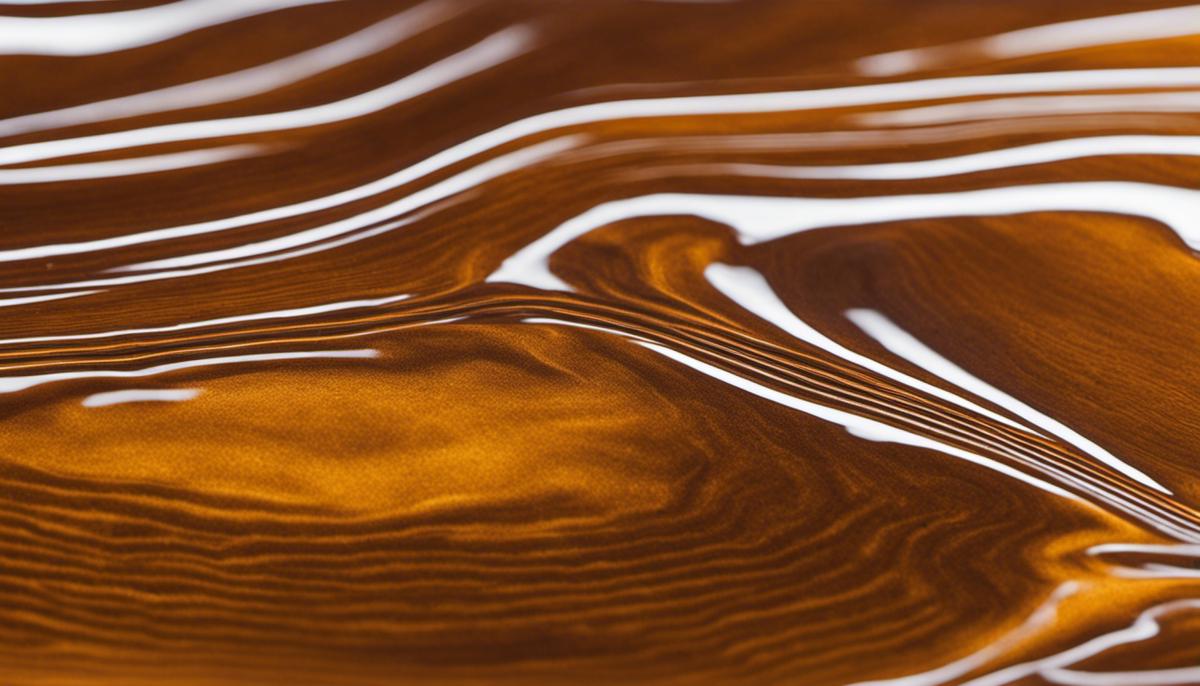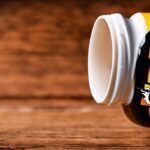Diving into the world of woodworking, one encounters the transformative aspects of wood glue in projects ranging from simple crafts to complex structures.
A crucial component of mastering this craft is understanding and implementing the proper use and manipulation of wood glue, including how to thin it for specific applications.
This knowledge extends from a fundamental understanding of wood glue’s composition to the techniques involved in its thinning, necessary safety precautions, and its practical application.
This journey into the intricacies of wood glue will provide you with the essential tools to enhance your woodworking skills, improving both your efficiency and the quality of your projects.
A Comparison Table of Thin Wood Glue
| Property | Cyanoacrylate (CA) | Acetone-Based CA | Super-Thin PVA |
|---|---|---|---|
| Composition | Acrylic resin | Cyanoacrylate | Water-based PVA |
| Bond Strength | Very good | Very good | Good |
| Drying Time | Very fast (1-5 sec) | Fast (5-30 sec) | Fast (15-30 min) |
| Viscosity | Very low | Low | Very low |
| Penetration | Excellent | Good | Good |
| Heat Resistance | Limited (150°F) | Limited (150°F) | Limited (150°F) |
| Gap Filling | Minimal | Minimal | Limited |
| Staining/Painting | No | No | Yes (after drying) |
| Toxicity | Low | Low | Low |
| Application | Hobby models, | Precision | Light woodworking, |
| woodworking | woodworking | crafts |
One of our articles –Can You Paint Over Wood Glue?
Thin wood glue is a low-viscosity adhesive designed for precise bonding in woodworking projects. It penetrates wood fibers effectively, ensuring strong and seamless joints. It’s ideal for delicate or intricate applications due to its thin consistency.
Exploring the Composition of Wood Glue
| Property | PVA Glue | Polyurethane Glue | Epoxy Resin | Hide Glue |
|---|---|---|---|---|
| Composition | Water-based | Polymer-based | Two-part mixture | Animal-based |
| Bond Strength | Good for general | Excellent | Excellent | Good for antiques |
| woodworking | and restoration | |||
| Drying Time | Fast (15-30 min) | Moderate (30-60 | Slow (several | Slow (30 min to |
| min) | hours) | several hours) | ||
| Clamping Time | Short (1-2 hours) | Moderate (2-4 | Long (4-24 hours) | Long (12-24 hours) |
| Waterproof | No | Yes | Yes | No |
| Heat Resistance | Limited (150°F) | High (200°F+) | High (200°F+) | Limited (140-150°F) |
| Gap Filling | Limited | Excellent | Excellent | Limited |
| Staining/Painting | Yes, after drying | Yes, after drying | Yes, after curing | No |
| Toxicity | Low | Low | Low | Low |
| Application | Woodworking, | Woodworking, | General purpose, | Antique repair, |
| carpentry | outdoor projects | bonding various | instrument making | |
| materials |
Wood glue, also known as PVA glue (polyvinyl acetate), is a white liquid adhesive used in woodworking and furniture making. It is highly valued for its bonding strength and water resistance, offering an effective seal for wooden surfaces.
Understanding its composition is essential to manipulate its properties effectively, such as thinning it for specific applications.
This adhesive is a polymer made up of monomers of vinyl acetate, catalyzed by heat or ultraviolet light. As polymerization occurs, the liquid becomes more viscous, creating the thick consistency characteristic of wood glue.
The bonded molecules create a robust network of chemical bonds, giving wood glue its potent sticking power. With its major component being polyvinyl acetate, wood glue contains solvents and other additives in smaller proportions for improved application and drying properties.
The solvent in the mix, often water for water-based PVA, effectively dissolves the polymer to create a liquid form that can be spread easily on the surface of the wood. As the solvent evaporates, the polymers move together, creating a solid mass that bonds the wood surfaces together.
Examining the behavior of wood glue, we understand that at room temperature, it is fairly viscous. When heated, it becomes thinner and flows more readily.
Conversely, when it is cooled, it thickens. It’s also worth noting that wood glue’s drying speed increases with higher temperatures and decreases at lower ones.
One of our articles –Wood Glue Vs Super Glue.
Thinning Wood Glue
To thin wood glue, you’ll need to add more of the solvent. Since most commonly used wood glues are water-based, simply adding small amounts of water will effectively thin the glue. Here’s how to do it:
- Pour the volume of wood glue you’ll need into a separate container. Changing its composition by thinning the entire product might not always be desirable.
- Start by adding water little by little, thoroughly stirring after each addition.
- Continue adding water until you obtain the desired consistency.
- Apply the thinned glue immediately to your woodworking project.
It is essential not to add too much water as it could weaken the adhesive properties of the glue.
The thinner the adhesive, the longer it will take to dry, and the less strong the bond will be. Ensuring the right balance can prove crucial for the success of your woodworking project
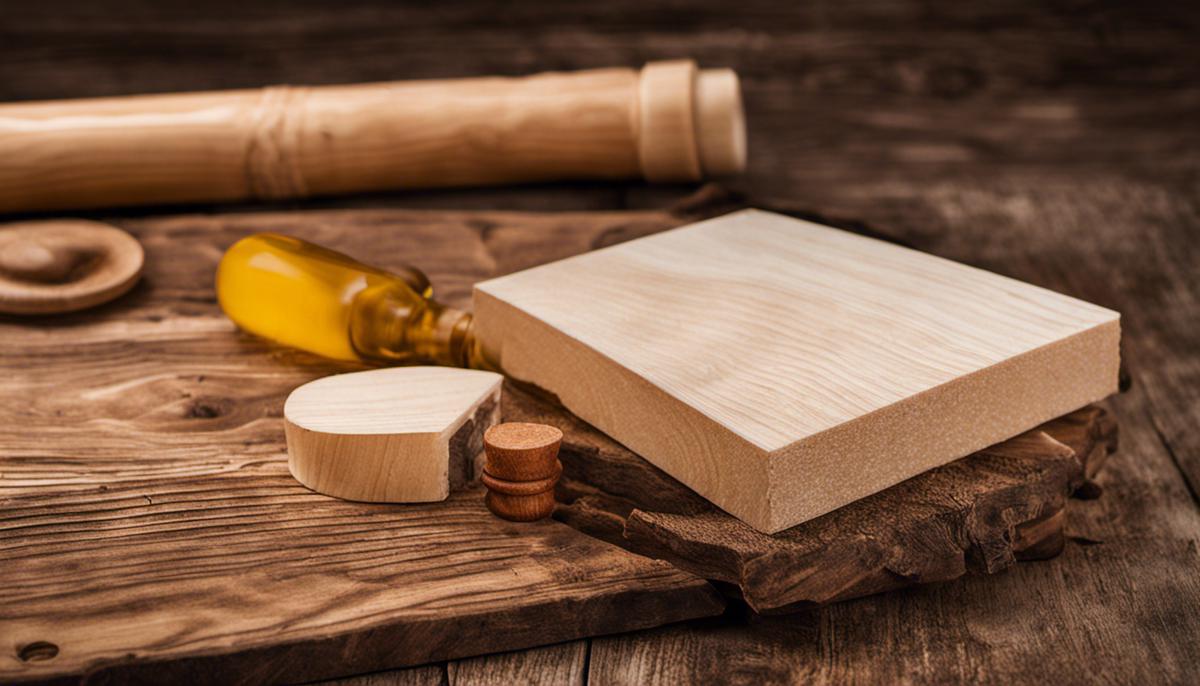
Thinning Techniques and Measures
| Criteria | Thinning Techniques | Measures |
|---|---|---|
| Purpose | Reduce dataset size | Quantify data attributes |
| Main Goal | Data reduction | Data analysis |
| Common Methods | Random sampling, | Mean, median, mode, |
| Stratified sampling, | range, variance, | |
| Feature selection, | standard deviation, | |
| Principal Component | skewness, kurtosis, | |
| Analysis (PCA), | entropy, etc. | |
| Clustering-based | ||
| Applicability | Preprocessing step | Statistical analysis, |
| before modeling | descriptive statistics | |
| Data Loss | Reduces dataset size | No data loss, |
| (may lose information) | but summarizes data | |
| Interpretability | May lead to loss of | Provides insights into |
| interpretability | data distribution and | |
| characteristics | ||
| Use Cases | Big data processing, | Exploratory data |
| Dimensionality | analysis, outlier | |
| reduction | detection, hypothesis | |
| testing, data summary |
One of our articles –Titebond 3 Dry Time.
Understanding Wood Glue and Its Viscosity
In the world of woodworking, an array of adhesives exists, and wood glue ranks among the most frequently employed substances.
Wood glues are renowned for their exceptional strength and durability. Nevertheless, at times, thick wood glue can pose challenges by being difficult to spread or failing to penetrate deeply into wood pores.
Beginner Tip: Water or Solvent?
Before deciding how to thin your wood glue, always scrutinize the label. PVA (polyvinyl acetate) glue, the most common type of wood glue, is water-based.
For such glues, exclusively employ water for thinning; solvents not only prove ineffective but can also compromise the glue’s adhesive properties. Conversely, certain specialized wood glues may necessitate specific solvents.
How to Thin Water-Based Wood Glue
Thinning PVA wood glue with water is a straightforward process that doesn’t demand technical expertise. It is advisable to add water in small increments, maintaining a ratio of 1 part glue to 10 parts water.
Always pour the water into the glue, not the other way around. Avoid hot water, as it could prematurely trigger the glue to set.
Mixing Techniques
Once water is added, mix the solution thoroughly but gently to prevent the formation of bubbles.
The goal is to achieve a uniform consistency without any lumps. Utilize a spoon or a stick for stirring, ensuring that you scrape the sides and bottom to integrate any residual, thicker glue.
Maintaining Glue Effectiveness
While thinning wood glue aids in application, remember that excessive dilution can diminish the glue’s bonding strength. Avoid thinning the glue beyond what is necessary to attain your desired consistency.
Testing Before Application
Always conduct a preliminary test of the thinned glue on scrap wood or an inconspicuous area. Apply it as you typically would and allow it to dry completely.
This evaluation will enable you to assess whether the thinned glue meets your expectations regarding adhesion strength and drying time.
Storing Thinned Glue
Keep in mind that thinned glue does not possess the same longevity as unthinned glue.
It is advisable to thin only the amount of glue required for the current project. If you must store it, use an airtight container and store it in a cool, dark place.
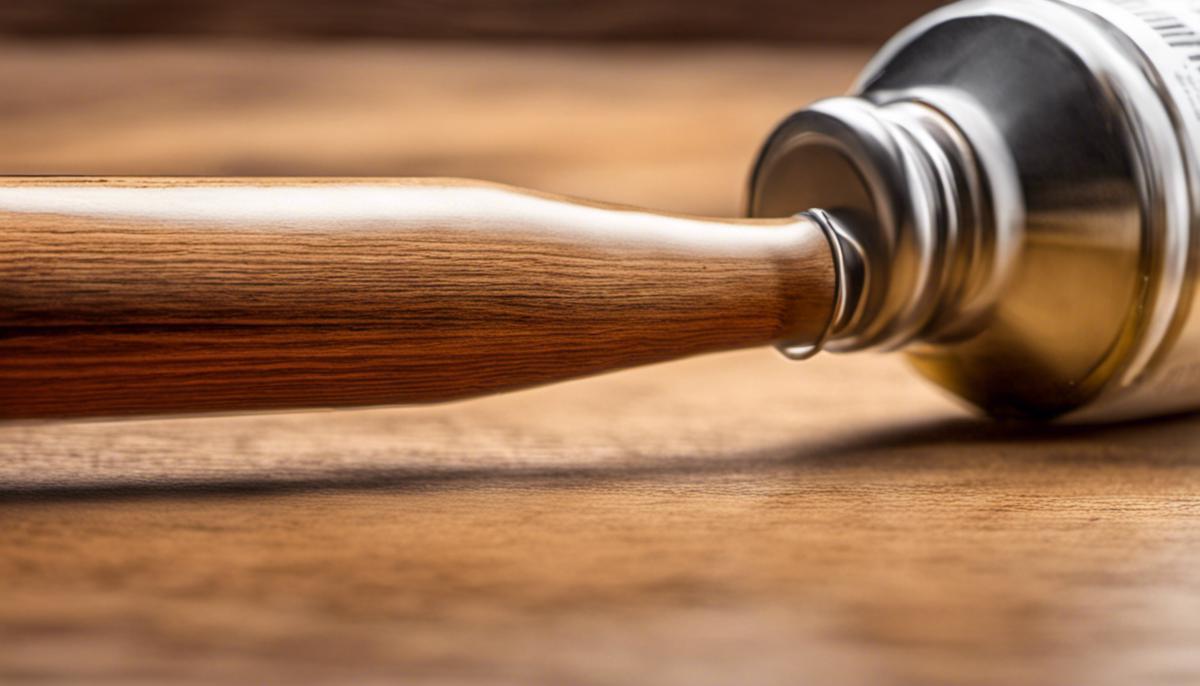
Safety Precautions
| Safety Precaution | PVA Wood Glue | Polyurethane Wood Glue | Epoxy Wood Glue |
|---|---|---|---|
| Skin Protection | Wear gloves to avoid direct contact. | Wear gloves to prevent skin contact. | Wear gloves to prevent skin contact. |
| Eye Protection | Safety goggles or glasses are recommended. | Safety goggles or glasses are recommended. | Safety goggles or glasses are recommended. |
| Ventilation | Use in a well-ventilated area to avoid inhaling fumes. | Use in a well-ventilated area to avoid inhaling fumes. | Use in a well-ventilated area to avoid inhaling fumes. |
| Fume Inhalation | Minimize exposure to fumes; wear a mask if necessary. | Minimize exposure to fumes; wear a mask if necessary. | Minimize exposure to fumes; wear a mask if necessary. |
| Storage | Store in a cool, dry place away from direct sunlight. | Store in a cool, dry place away from direct sunlight. | Store in a cool, dry place away from direct sunlight. |
| Cleanup | Clean tools and spills with water while glue is wet. | Clean tools and spills with acetone or an appropriate solvent. | Clean tools and spills with acetone or an appropriate solvent. |
| Flammability | Generally not flammable. | Generally not flammable. | Avoid open flames during use. |
| Toxicity | Generally low toxicity but should not be ingested. | Generally low toxicity but should not be ingested. | Avoid skin or eye contact; may be harmful if ingested. |
| Curing Time | Follow manufacturer’s instructions for drying time. | Follow manufacturer’s instructions for curing time. | Follow manufacturer’s instructions for curing time. |
One of our articles –Liquid Nail vs Gorilla Glue.
Safety Precautions When Handling Wood Glue and Thinning Components
The first step in safely handling wood glue and thinning components involves wearing the right protective gear. Always use safety goggles, gloves, and long-sleeved clothing to shield your skin from direct contact with the glue and thinning substances.
Residue can lead to irritation and allergic reactions in some cases.
Appropriate Work Environment
Ensure you’re working in a well-ventilated area to prevent the inhalation of harmful chemical fumes.
These fumes can cause discomfort to your eyes and lungs, leading to stronger side effects like nausea, dizziness, and, in severe cases, loss of consciousness.
Large open spaces or rooms with open windows and fans can increase airflow and decrease the risk.
Accidental Ingestion or Inhalation
In case of accidental ingestion or inhalation, immediately consult a healthcare professional. Avoid inducing vomiting unless advised by a professional.
If wood glue is inhaled, move to an area with fresh air and remain calm; excessive activity can exacerbate symptoms.
Handling Flammable Components
Many wood glue thinners are flammable substances. Keep them away from open flames or heat sources to prevent the risk of a fire. Store these substances in cool, dry places out of children’s reach.
During disposal, do not pour glue thinners down the sink or into a regular trash bin. These substances can contaminate water and damage waste disposal systems.
Safe Disposal Protocols
Always follow the manufacturer’s instructions on the product packaging for the safe disposal of wood glue and thinners. If these instructions are missing or unclear, contact your local waste disposal facility for guidance.
They can inform you where and how to dispose of these types of chemical products without causing harm to the environment. Never mix used or leftover glue or thinners with other substances before disposal, as this could cause a dangerous chemical reaction.
Remember, safety is always the top priority when dealing with potentially harmful substances like wood glue and thinners. Therefore, never rush the process. If you feel unclear or uncertain at any moment, always take a moment to reexamine the situation or seek advice.

Practical Application
Choosing Suitable Wood Glue
Before you thin wood glue, you need to ensure that the glue you have is suitable.
Some renowned wood adhesive manufacturers include Elmer’s, Franklin International, and Gorilla Glue.
The key factor to remember is to choose wood glue that is water-soluble. If your glue is not soluble in water, it will not thin correctly.
Check the packaging to determine this before attempting to thin the glue, as using non-water-soluble glue could potentially damage your project.
Creating the Thinned Wood Glue Mixture
To thin your wood glue, prepare a clean, dry container where you will mix the glue with water. A glass or plastic container works well for this purpose.
The water will dilute the glue to achieve a more manageable consistency. Start by adding a portion of glue (let’s say one part for easy measurement) and then gradually add water.
However, try not to exceed more than half a part of water. Add the water slowly, stirring continuously, until you achieve the desired consistency.
Monitoring Consistency and Quality
As a rule of thumb, wood glue should be thin enough to spread easily. If your mixture is too watery, it may not hold well, and if it’s too thick, it could lead to a messy application.
So, finding a balance is crucial. An optimal consistency should resemble that of heavy cream or pancake batter.
Applying the Thinned Wood Glue
With your glue at the right consistency, it’s time to apply it to your woodworking project.
Use a small paintbrush or glue spreader and apply the glue evenly onto the wood surface. Make sure all areas that need to be bonded are adequately covered with glue.
Clamping and Drying Time
After you have applied the glue, join your pieces of wood together, ensuring they align well. Use clamps to hold the pieces in place while the glue dries.
The recommended clamp time for most wood glues is around 30 minutes to one hour, but check the instructions on your glue bottle. Always allow full curing time (usually 24 hours) before stressing the joint.
Troubleshooting Tips
Adding too much water can diminish the adhesive properties of the glue, so ensure you add water gradually.
It’s always better to start off with less water and add more as needed. Remember, it is easier to add water than to remove it.
Also, keep in mind that thinned wood glue might not be as strong as its regular consistency. Try testing it first on a small project before using it for a larger, more essential task.
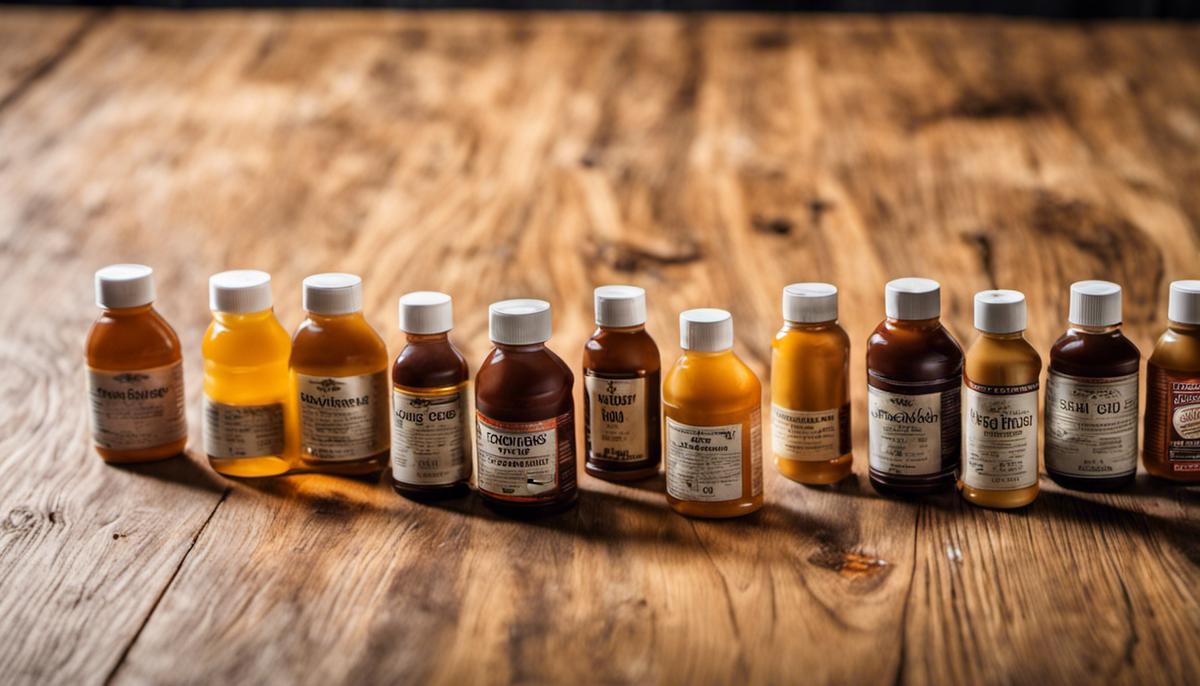
Related Questions
What is X-Acto Thin Wood Glue?
X-Acto Thin Wood Glue is a product manufactured by Elmer's Products, Inc. It is a water-based adhesive specifically designed for bonding thin pieces of wood together.
How long does Thin Wood Glue take to dry?
Thin Wood Glue features a quick-drying formula, so drying time is relatively short. Exact drying times may vary depending on factors like temperature and humidity, but it typically dries relatively quickly.
Can I use Thin Wood Glue for projects other than woodworking?
Yes, Thin Wood Glue is versatile and suitable for a wide range of applications, including crafts and model-making, in addition to woodworking.
Does Thin Wood Glue dry transparent or leave a visible residue?
Thin Wood Glue dries clear, ensuring that the bond is virtually invisible. This makes it ideal for projects where aesthetics are important.
How to thin Titebond 2 wood glue?
To thin Titebond 2 wood glue, simply add a small amount of water and stir until you achieve your desired consistency. Be cautious not to add too much water, as it can weaken the adhesive properties.
How to thin Gorilla wood glue?
To thin Gorilla wood glue, mix in a small amount of water and blend until you reach the desired thickness. Exercise care not to over-thin, as it may affect its bonding strength.
How to thin PVA glue?
To thin PVA glue, mix it with water in a 1:1 ratio or as needed to achieve the desired consistency. Stir well until thoroughly blended.
How to thin wood glue for cracks?
To thin wood glue for filling cracks, mix it with water to create a paste-like consistency. Apply the thinned glue to the crack, ensuring it penetrates well, and wipe away any excess before it dries.
From these insights, we have traversed through the chemical backbone of wood glue to the delicate art of thinning it.
These concepts not only illuminate a deeper understanding of adhesives but also provide a more well-rounded perspective on woodworking in general.
By familiarizing yourself with the acquired thinning techniques, implementing safety measures, and engaging in hands-on practice, you are now better equipped to handle woodworking projects with enhanced precision.
This gained proficiency will undoubtedly serve as a cornerstone in achieving superior craftsmanship, allowing you to break through boundaries and explore new ventures in the inspiring world of woodworking

